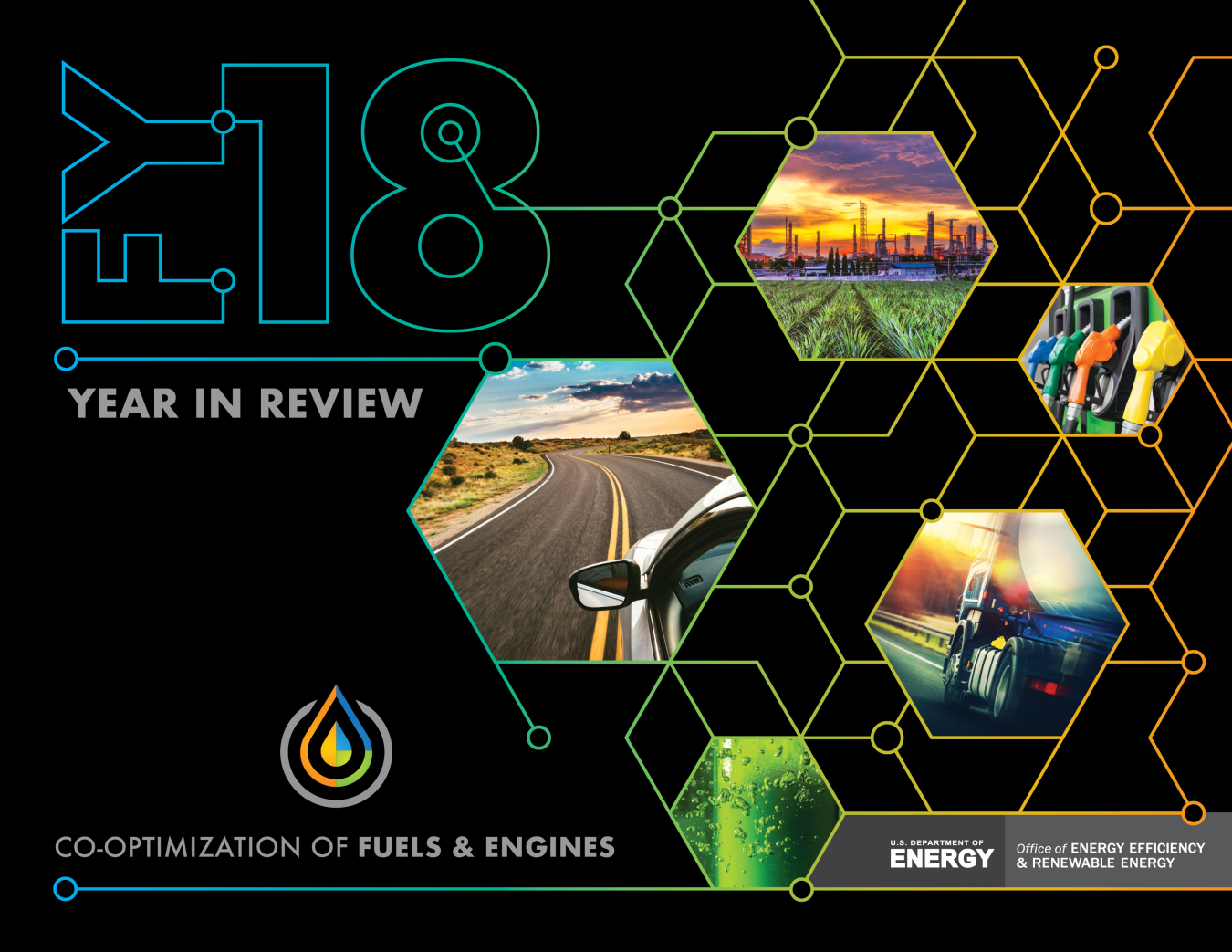We now know what innovation is needed to make real fuel economy gains.
Office of Critical Minerals and Energy Innovation
June 24, 2019Today’s cars are advancing at lightning speed: from electric vehicles to efficient internal combustion engines to automated vehicles. Transportation is changing. Although the fuel-economy ratings of today’s cars are dramatically higher than those of just 10 years ago, vehicles are rapidly approaching the limits of efficiency gains that can be achieved cost-effectively with existing engine designs and conventional fuel formulas. At the same time, vehicles powered by internal combustion engines and liquid fuels will continue to make up a large share of the automotive market for decades to come.
How can we maximize efficiency and performance with solutions that make sense for consumers, businesses, automakers, and other stakeholders?

Research and Development Breakthroughs by U.S. Co-Optima Team
The U.S. Department of Energy’s (DOE) Co-Optimization of Fuels and Engines (Co-Optima) initiative has brought together top scientists, engineers, and analysts from across the country to tackle efficiency and performance issues through simultaneous improvements to fuels and engines.
DOE’s report released this week describes the Co-Optima team’s recent breakthroughs in understanding:
- How fuel properties affect thermal efficiency
- How engine design and fuel characteristics work together
- What factors might influence market viability
The outcomes of the Co-Optima initiative research will provide American industry and decision-makers with the objective scientific knowledge, data, and tools needed to decide which solutions hold the greatest potential to benefit drivers, industry, and the environment.
In the last year, the Co-Optima team achieved an important milestone, completing a major body of research focused on boosted (also known as “turbocharged”) spark-ignition engines and fuels for light-duty vehicles. Manufacturers are introducing more cars with these advanced gasoline engines that deliver higher power density and improved fuel economy. In some circumstances the characteristics that maximize efficiency can also exacerbate the potential for “knock”—the spontaneous ignition of fuel triggered by high temperatures and pressures inside engine cylinders—which can lead to less-than-ideal performance.
Co-Optima researchers revealed how joint optimization of engine parameters (such as compression ratio and downsizing) and fuel properties (particularly octane number, octane sensitivity, and heat of vaporization) can improve fuel economy and performance, while still avoiding knock and any negative effects on drivability.
This has led to the identification of six blendstocks—di-isobutylene, ethanol, fusel alcohol blend, isobutanol, isopropanol, and n-propanol—that can be produced from a variety of domestic and renewable resources and exhibit the greatest potential to increase engine efficiency with the fewest barriers to implementation when combined with petroleum-based fuels in optimized engines.
Co-Optima researchers are also addressing challenges specific to medium-duty and heavy-duty trucks. Although today’s mixing-controlled compression ignition (MCCI) diesel engines are extremely efficient, they require complex and costly emissions control technologies.
Scientists’ are exploring the potential of diesel-like blendstocks for use in advanced MCCI engines to improve fuel economy and reduce the cost and complexity of emissions control systems. Blendstocks investigated to date include alkanes, cyclic alkanes, alkenes, ethers, polyethers, and esters. The team is also looking at revolutionary advanced compression-ignition technologies that have the potential to simultaneously deliver high engine efficiency and low emissions.
Sponsored by DOE's Vehicle Technologies Office and Bioenergy Technologies Office, Co-Optima partners include the National Renewable Energy Laboratory, as well as Argonne, Idaho, Lawrence Berkeley, Lawrence Livermore, Los Alamos, Oak Ridge, Pacific Northwest, and Sandia National Laboratories, 20 universities across the country, and Hyundai-Kia America.
Read the full report and learn more about the Co-Optima initiative.

